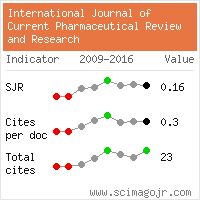Lakshmi E, Saraswathy E
Abstract Online: 22-October-2015
Azizul Islam M , Murshida Begum M, Sarker M K, Akter A, Ahemed S U
Abstract Online: 22-October-2015
Consolacion Y. Ragasa, Virgilio D. Ebajo Jr., Mariquit M. De Los Reyes, Emelina H. Mandia, Robert Brkljača and Sylvia Urban
Abstract Online: 23-October-2015
Chinmaya Keshari Sahoo, Surepalli Ram Mohan Rao, Muvvala Sudhakar
Abstract Online: 31-October-2015
Ashok Kumar J, Ramkanth S, Lakshmana Prabu S, Gopal V
Abstract Online: 11-November-2015
Selvamani P , Latha S, Sherlina Daphny C, Arputha BibianaM
Abstract Online: 11-November-2015

